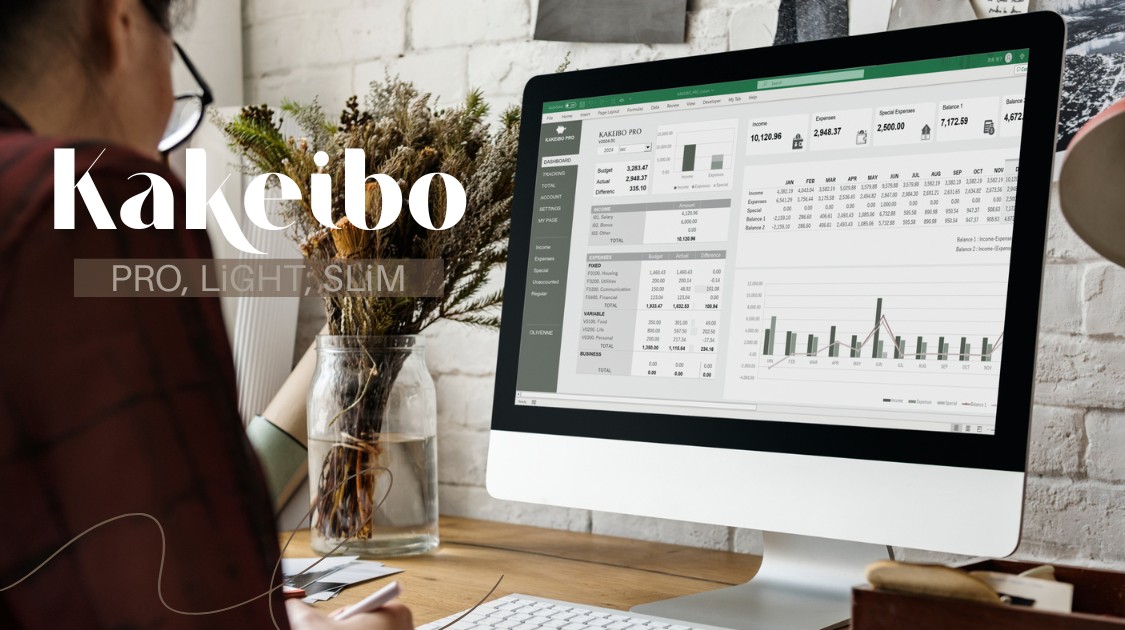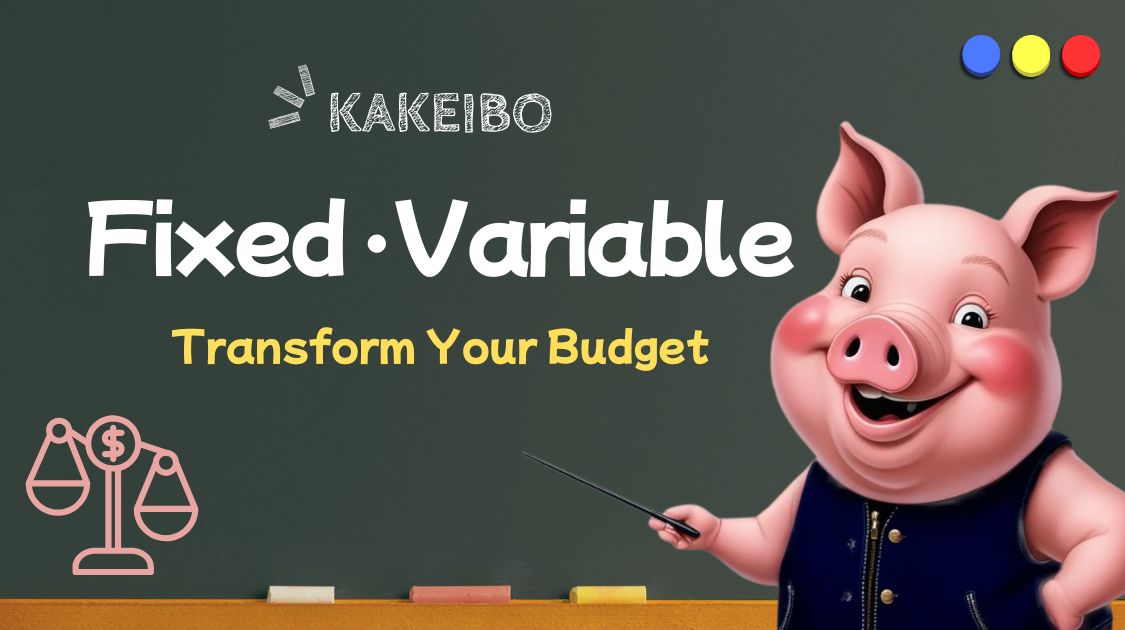While keeping a household budget, have you ever wondered, “Hmm, which expense category should I put this expenditure under?” For example, hobby goods or daily necessities bought at the drugstore—there are times when you can’t immediately find the perfect category, right?
I used to keep a household budget by roughly deciding on expense categories, thinking, “Well, it’s something like this…” But when I looked back later, I often found that the breakdown of my expenses was vague.
I decided that I wanted to create more detailed and personalized expense categories. So, I did thorough research and went through a lot of trial and error. In this blog, based on my experience, I will explain how to categorize household budget expenses in a very easy-to-understand manner.
Why do we categorize expenses in the first place?
What kinds of expense categories are there?
How can I create expense categories that suit me?
I will carefully answer these questions one by one. Ultimately, my goal is for all of you to create your own original expense list and manage your household finances enjoyably and reliably! Let’s get started!
Language: English Japanese
1. The Importance of Expense Categorization in Household Budgeting
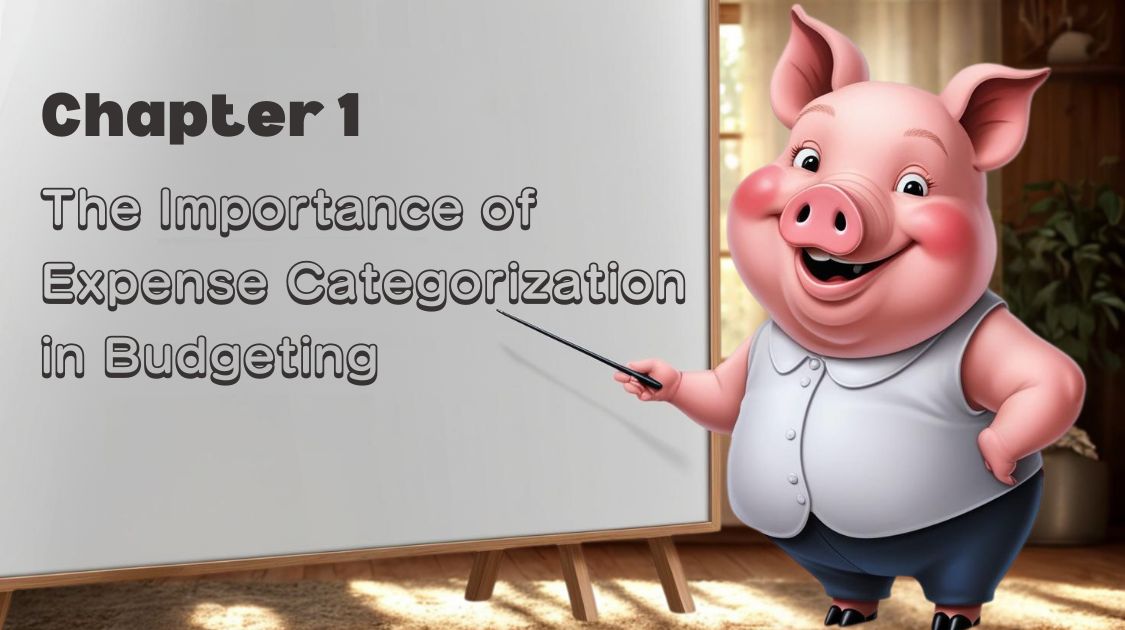
How are you categorizing your expenses? If you’re dividing them “just somehow,” you might find yourself lost later when you look back, wondering, “What did I spend this money on?”
Expense categorization is a crucial element of successful household budget management. Proper categorization allows you to accurately assess your current financial state, reduce wasteful spending, and make it easier to plan savings for future goals. Here, I will explain why expense categorization is essential in household budgeting, focusing on three key points:
- Visualization of Money Flow:
By categorizing expenses, you can quickly see what you’re spending money on and how much. You might realize, “I’m spending a lot on food” or “I might be overspending on entertainment,” making it easier to come up with concrete improvement measures. - Easier to Spot Wasteful Spending:
Wasteful spending that is hard to notice when simply glancing at your finances can become clear through expense categorization. For example, you might realize, “Small purchases at convenience stores actually add up to a big expense.” - Increased Motivation to Achieve Goals:
Setting a budget for each category and comparing it with actual spending increases your awareness of your financial goals. You might even start to enjoy saving money as if it were a game.
As you can see, expense categorization in household budgeting is a powerful tool for improving financial management. In the next chapter, I will take a closer look at specific methods of expense categorization.
2. Categorizing Various Everyday Items
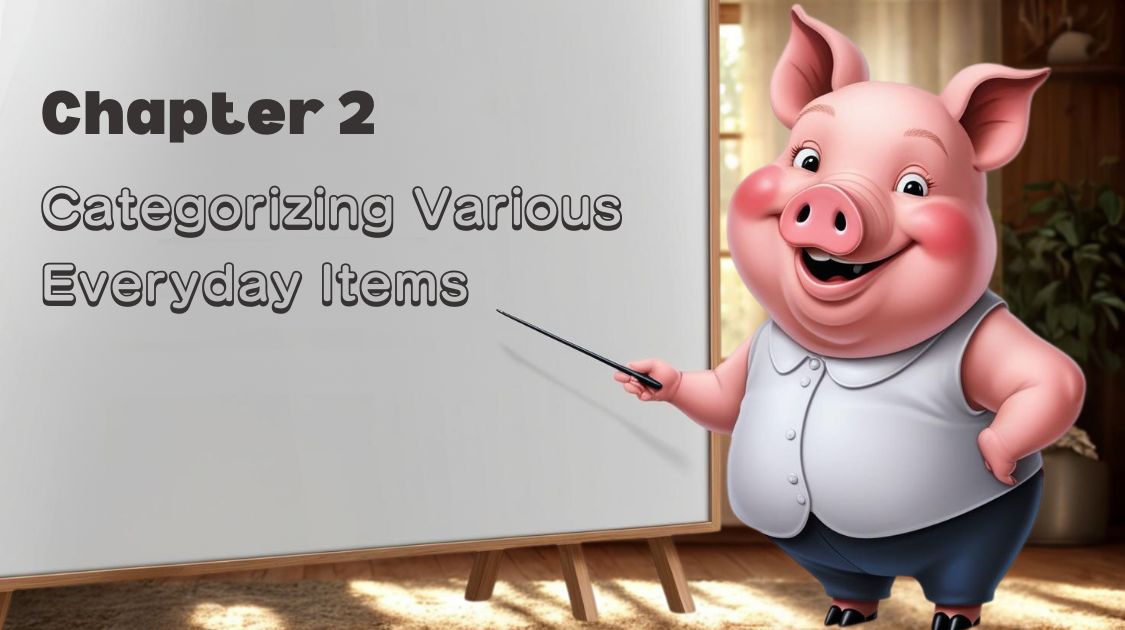
This chapter provides a thorough explanation of how to categorize items that often cause confusion during daily shopping, making you wonder, “Which expense category does this expense belong to?”
First, I will share my personal experiences and struggles that led me to create a detailed expense categorization list. Then, I will introduce the detailed categorization list I created, covering everything from daily necessities to hobby items.
2-1. Background of Creating the Expense Categorization List
While keeping a household budget, have you ever wondered, “Hmm, which expense category should I put this under…?” I used to have that problem all the time.
For example, when I buy detergent along with groceries at the supermarket, groceries fall under “Food Expenses”, but what about detergent? “Daily Necessities”? Or “Consumables”? Even when I searched the internet for a household budget expense list, I could only find rough classifications that didn’t quite fit my lifestyle.
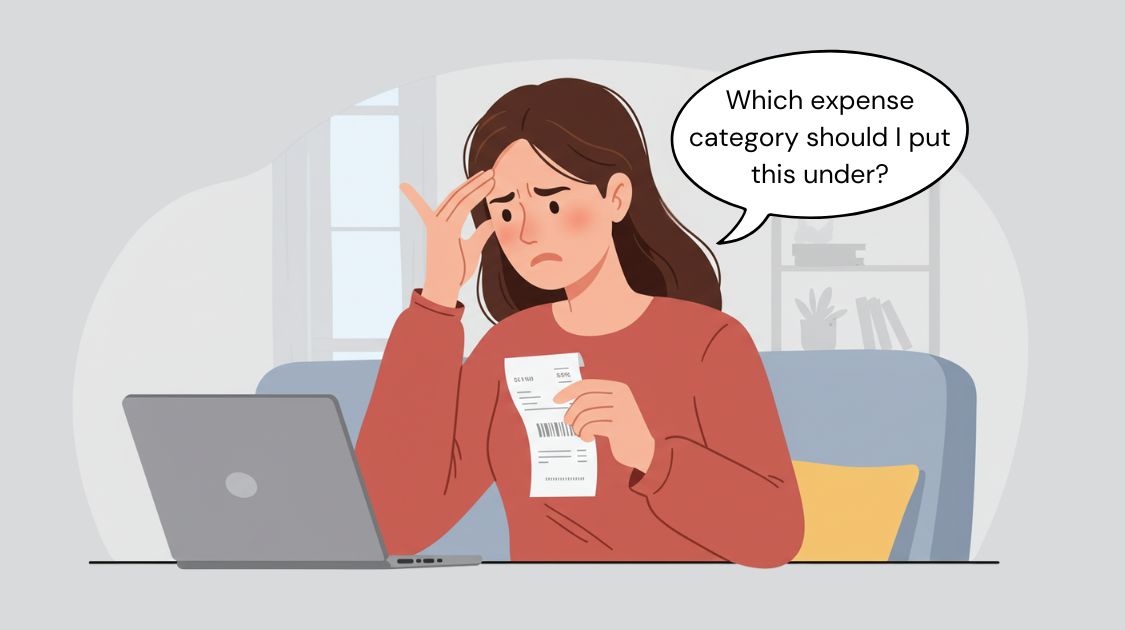
I’m a meticulous person by nature, so I had a strong desire to properly categorize household budget expenses and visualize the flow of money! But I couldn’t find anything that explained it in enough detail. So, I decided to create one myself.
So, I started by thoroughly listing the types of expenses I had in my daily life. Looking at the items I wrote down, I considered which expense category each one belonged to, one by one. “Is this stationery?” “Would this count as a consumable?”
Furthermore, I researched how products were categorized on online shopping sites such as Amazon and Rakuten, as well as in major supermarkets and drugstores. Through repeated trial and error, I created an expense categorization list that I was satisfied with.
2-2. Introducing the Categorization List
You might be thinking, “Isn’t it a hassle to categorize expenses in detail?” It’s true that it takes a little effort at first. But once you create the list, all you have to do is categorize expenses mechanically while referring to it, which actually makes household budgeting easier! Here, I will introduce the expense categorization list I created.
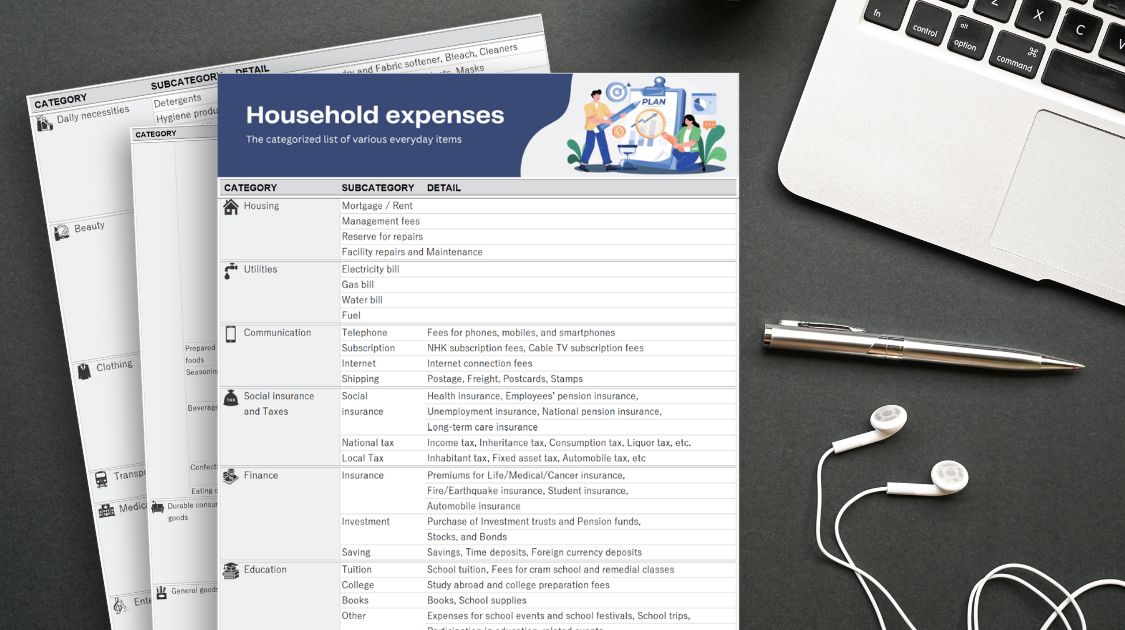
Housing
“Housing” refers to the costs associated with housing, such as monthly rent and a mortgage. Housing expenses account for a significant percentage of the household budget.
Mortgage/Rent, Management fees, Reserve for repairs, Facility repairs and Maintenance
Utilities
“Utilities” refer to the costs paid to use public services, such as water, electricity, and gas. These expenses are essential for comfortable living in your home and should be carefully recorded as part of your household budget. By keeping track of your utility expenses, you can reduce wasteful usage and take steps to save money.
Water bill, Electricity, Gas, Fuel
Communication
“Communication” refers to the costs associated with communication services. This is an essential expense in modern life and one of the most important items in the household budget.
| Telephone | Fees for phones, mobiles, and smartphones |
| Subscription fees | NHK subscription fees, Cable TV subscription fees |
| Internet | Internet connection fees |
| Shipping | Postage, Freight, Postcards, Stamps |
Social insurance and Taxes
The term “Social Insurance and Taxes” refers to the costs related to social insurance premiums and various taxes. These expenses are paid by individuals and households to support the social security system and government finances. Understanding and budgeting for these expenses is important for your financial health.
| Social insurance | Health insurance, Employees’ pension insurance, Unemployment insurance, National pension insurance, Long-term care insurance |
| Tax | National tax: Income tax, Inheritance tax, Consumption tax, etc. Local tax: Inhabitant tax, Fixed asset tax, Automobile tax, etc. |
Finance
“Finance” refers to the costs associated with financial services and products, such as fees, charges, and interest.
| Insurance | Premiums for Life/Medical/Cancer insurance, Fire/Earthquake insurance, Student insurance, Automobile insurance |
| Investment | Purchase of Investment trusts and Pension funds, Stocks, and Bonds |
| Saving | Savings, Time deposits, Foreign currency deposits |
Education
“Education” refers to the various costs associated with education, such as tuition, books, and supplies. Education expenses are vital components of the household budget and crucial for children’s growth and future educational opportunities.
| Tuition | School tuition, Fees for cram school and remedial classes |
| Study abroad and college | Study abroad and college preparation fees |
| Books | Books, School supplies |
| Other | Expenses for school events and school festivals, School trips, Participation in education-related events |
Food
“Food” refers to the costs of food, such as groceries, dining out, and beverages. Keeping track of food expenses is crucial in the household budget, as they are essential for daily sustenance. By managing your food expenses, you can keep your budget in check while maintaining a healthy diet.
| Staple food | Rice | White rice, Brown rice, Glutinous rice |
| Breads | Breads, Scones, Sandwiches | |
| Noodles | Udon, Soba, Pasta, Chinese noodles, Cup noodles | |
| Other | Millet, Wheat, Rice cakes, Cereals | |
| Groceries | Vegetables | Fresh vegetables |
| Seaweed: Wakame, Kelp, Mekabu, Hijiki, Seaweed | ||
| Dried foods: Beans, Dried shiitake mushrooms, Bean-starch vermicelli, Sesame, Furikake, Tea leaves | ||
| Processed soybean products: Natto, Tofu, Abura-age, Ganmodoki | ||
| Processed vegetable products: Konnyaku, Pickled plums, Pickles, Tsukudani | ||
| Fruits | Fresh fruits | |
| Processed fruits: Dried fruits, Canned fruits, Jellies, Jams, Honey | ||
| Nuts | Almonds, Cashews, Walnuts, Pistachio, Peanuts, Chestnuts, Ginkgo nuts | |
| Meats | Fresh meats | |
| Processed meats: Ham, Sausage, Bacon | ||
| Fish | Fresh Fish | |
| Shellfish | ||
| Salted and dried seafood: Cod roe, Dried young sardines, Dried horse mackerels | ||
| Fish paste products: Kamaboko, Chikuwa | ||
| Processed seafood products: Dried bonito flakes, Pickles, Tsukudani, Canned seafood | ||
| Dairy products | Eggs, Milk, Cheese, Yogurt, Butter, Margarine | |
| Flour | Wheat flour, Rice flour, Potato starch, Breadcrumbs | |
| Prepared foods | Staple | Bento, Sushi, Rice balls, Porridge, Pizza |
| Side dishes | Prepared foods, Frozen foods, Retort pouch foods | |
| Seasonings | Fats and oils | Cooking oil, Sesame oil, Olive oil |
| Seasonings | Sugar, Salt, Soy sauce, Vinegar, Miso, Soup stock, Sauce, Ketchup, Mayonnaise, Dressing | |
| Beverages | Teas | Green tea, Black tea, Oolong tea, Barley tea, Herbal tea |
| Coffee | Coffee, Cocoa, Café au lait | |
| Juices | Fruit and vegetable juices | |
| Alcohol | Beer, Wine, whiskey, Sake, Shochu | |
| Other | Carbonated drinks, Dairy drinks, Mineral water, Sports drinks | |
| Confectionery | Western sweets, Japanese sweets, Rice crackers, Snacks, Delicacies, Confectionery ingredients | |
| Eating out | Breakfast, Lunch, Dinner, Café |
Durable consumer goods
The term “Durable Consumer Goods” refers to the costs of consumer goods intended for long-term use, such as appliances, furniture, and electronics. Once purchased, these items are used for a long period of time and are not frequently replaced like other consumer goods.
| Furniture | Tables, Sofas, Chairs, Storage |
| Appliances | Microwave ovens, Refrigerators, Washing machines, Vacuum cleaners, Air conditioners, Televisions, Computers, Cameras |
| Bedding | Deds, Futons, Blankets |
| Decoration | Light fixtures, Curtains, Rugs, Paintings |
| Kitchenware | Cooking utensils, Plates, Pots, Pans |
General goods
The term “General Goods” refers to the costs of small purchases of miscellaneous items necessary for daily living, such as household goods, personal items, and stationery. These expenses are essential for daily living and completing household chores.
| Household goods | Buckets, Brushes, Brooms, Hangers, Ironing boards |
| Living goods | Storage goods, Slippers, Towels, Mats, Umbrellas, Packing materials |
| Stationery | Notebooks, Organizers, Writing utensils, Paper products, Scissors, Glue, Cellophane tape |
| Other | Handicrafts, Travel accessories, Seals, Disaster prevention and security goods |
Daily necessities
The term “Daily Necessities” refers to consumable items used in daily life, such as detergents, hygiene products, and cleaning supplies, as well as other items needed for household chores. Understanding your spending on daily necessities allows you to plan purchases and manage your budget effectively.
| Detergents | Kitchen detergent, Laundry and Fabric softener, Bleach, Cleaners |
| Hygiene products | Paper products, Sanitary products, Baby products, Masks |
| Household items | Plastic wrap, Aluminum foil, Storage bags, Garbage bags, Household utensils |
| Chemical products | Insecticides, Insect repellents, Dehumidifiers, Deodorizers, Air fresheners |
| Other | Dry cell batteries, Candles, Incense, Matches, Lighters |
Beauty
“Beauty” refers to the costs of goods and services related to beauty and health, such as skincare products, salon services, and healthcare expenses. These expenses are essential for those interested in self-care and beauty, and they can quickly escalate if not properly budgeted for.
| Skin care | Cleanser, Cleansing, Toner, Essence, Cream, UV protection |
| Body care | Body and hand creams, Soaps, Bath salts, Razors, Hair removal |
| Hair care | Shampoos, Treatments, Hair styling products |
| Oral care | Toothpaste, Toothbrush, Mouthwash |
| Nail care | Manicure, Nail gel, Remover, Nail tools |
| Cosmetics | Foundation, Primer, Lipstick, Lip balm, Mascara, Makeup accessories |
| Perfume | Perfume, Aroma |
| Salon | Beauty salon, Esthetic salon, Nail salon, Massage |
Clothing
“Clothing” refers to the costs of clothing and accessories, such as apparel, footwear, and jewelry. Understanding clothing expenses enables you to effectively manage your clothing and fashion budget.
| Clothing | Tops, Pants, Skirts, Coats, Jackets, Suits, Socks, Tights |
| Underwear | Underwear, Pajamas, Innerwear |
| Accessories | Wallets, Hats, Sunglasses, Scarves, Belts, Gloves, Handkerchiefs |
| Bags | Bags, Suitcases |
| Shoes | Pumps, Business shoes, Boots, Sneakers, Sandals |
| Jewelry | Necklaces, Rings, Earrings, Bracelets, Accessories |
| Watches | Watches, Accessories for watch |
Transportation
“Transportation” refers to the costs associated with travel and commuting to and from work, school, or other destinations. This category is crucial for understanding and budgeting daily transportation costs.
| Transportation | Train, Bus, Airfare, Cab, Commuter pass |
| Automobile | Gasoline, Parking lot rent, Vehicle inspection, Maintenance |
Medical
“Medical” refers to the costs of medical services and related products, such as prescriptions, medical equipment, and over-the-counter medications. Understanding medical expenses is crucial for visualizing healthcare expenditures and effectively managing the budget.
| Medical consultation fee | Medical and dental care, Surgery, Hospitalization, Treatment, Medical checkups |
| Pharmaceuticals | Medicines, Herbal medicines, Trauma and skin disease medicines, Nutritional supplements, Sanitary and medical products |
| Health care products | Eyeglasses, Contact lenses, Physical measuring instruments, Nursing care products |
Entertainment
“Entertainment” refers to the costs associated with knowledge acquisition, hobbies, and recreational activities, such as books, movies, sports, and events. Understanding your entertainment expenses enables you to effectively budget for hobbies and leisure activities.
| Books | Newspapers, Magazines, Books |
| Movies and music | Musical instruments, CDs, DVDs, Concerts, Live performances, Watching movies |
| Sports | Sporting goods, Gym, Sports games |
| Toys | Game consoles, Game software, Toys |
| Pets | Pet food, Pet supplies, Vaccines, Trimming, Veterinary fees |
| Hobbies | Travel, Craft supplies, Gardening supplies, Plants, Flowers, Apps, Learning |
Social
“Social” refers to the costs incurred for socializing and social activities with friends and acquaintances, such as dining out, attending events, and hosting gatherings. Understanding these costs enables you to effectively budget for social activities.
Weddings, Funerals, Meals at restaurants, Drinks at cafes, Event participation fees, Gifts, Presents, and Souvenirs
Service
“Service” refers to the costs paid for the use of various services. Utilizing services can enhance the convenience of your life. Understanding service expenditures is crucial for budget management.
Cleaning, Rental, Maintenance, Repair, Housekeeping, Care services, Animal services (e.g., pet hotels and pet sitters)
Of course, this is just one example. Feel free to customize it to fit your lifestyle. In the next chapter, I will explain about the benefits of using this expense list.
3. Benefits of Utilizing an Expense List

What are the real benefits of using the detailed expense list introduced in Chapter 2? In this chapter, I will explain the key advantages of an expense list, focusing on three points.
3-1. Customizable Expense Categories to Fit Your Needs
Do I have to use the same expense categories as everyone else?
Absolutely not! The greatest advantage of an expense list is that you can freely customize the categories to fit your lifestyle and values.
For example, items that are typically grouped together as “Entertainment” in a general household budget can be categorized in detail with an expense list, such as:
- If you like reading: Book expenses, E-book expenses
- If you like movies: Movie expenses, Video streaming service
- If you like games: Game expenses, Game-related goods expenses
This allows you to not only vaguely feel, “I might be overspending on hobbies,” but also to specifically identify, “Which hobby category am I overspending on?”
You can also consolidate multiple expense categories, not just subdivide them. For example, you can merge “Eating Out Expenses” and “Cafe Expenses” into “Eating Out & Cafe Expenses”, or “Daily Necessities” and “General goods” into “Household Goods Expenses”. Adjusting your categories freely allows you to manage your budget more easily.
3-2. Smoother Household Budget Input
Keeping a household budget is a hassle…
An expense list might be the solution! With a detailed expense list, the time spent looking at your receipts and wondering, “What is this… um…” will be dramatically reduced, making household budget entry much smoother.
Having a list makes it easier to quickly determine which expense category each expenditure belongs to. It’s like fitting puzzle pieces together—simply matching the items on your receipts to the expense categories on your list. When daily input becomes easier, it’s also easier to stay motivated to keep a household budget.
3-3. Shareable with Family Members
I want to share the household budget with my spouse, but it’s a problem if we have different understandings of the expenses…
An expense list is highly recommended for families with such concerns! By sharing the expense list with your family, you can establish a common understanding of household finances, making budget management much smoother. For example:
Husband: This is for work, so it’s “Work-related Expenses”, right?
Wife: Huh? Isn’t that “Daily Necessities”?
It helps prevent discrepancies in the perception of expenses. Also, by sharing the list, you can more easily plan specific savings and expenditures, such as “We’ve overspent on food this month, so let’s cut back on eating out,” or “We have some room in our clothing budget this month, so maybe I can buy that dress I wanted.”
It becomes a powerful tool for the whole family to share household goals and work together to achieve them.
4. Conclusion

Through this blog, I hope you have gained a broad understanding of everything—from the importance of expense categorization to specific classification methods and the benefits of using an expense list.
Even if you’ve been keeping a household budget but categorizing expenses haphazardly, or if you’re thinking of starting a household budget but feel that expense categorization seems difficult, I encourage you to take this opportunity to create your own customized expense list.
It may seem a bit troublesome at first, but once you create a list, daily household budget entry will become much easier, and you’ll be able to see the flow of money clearly. By accurately understanding “what you’re spending money on and how much, ” you can take concrete actions to reduce wasteful spending and increase savings.
And now, for those of you who have read this blog to the end, I have a special announcement! I’ve created an Excel file containing the categorization list introduced in this blog. With this file, you can manage expense categorization even more easily!
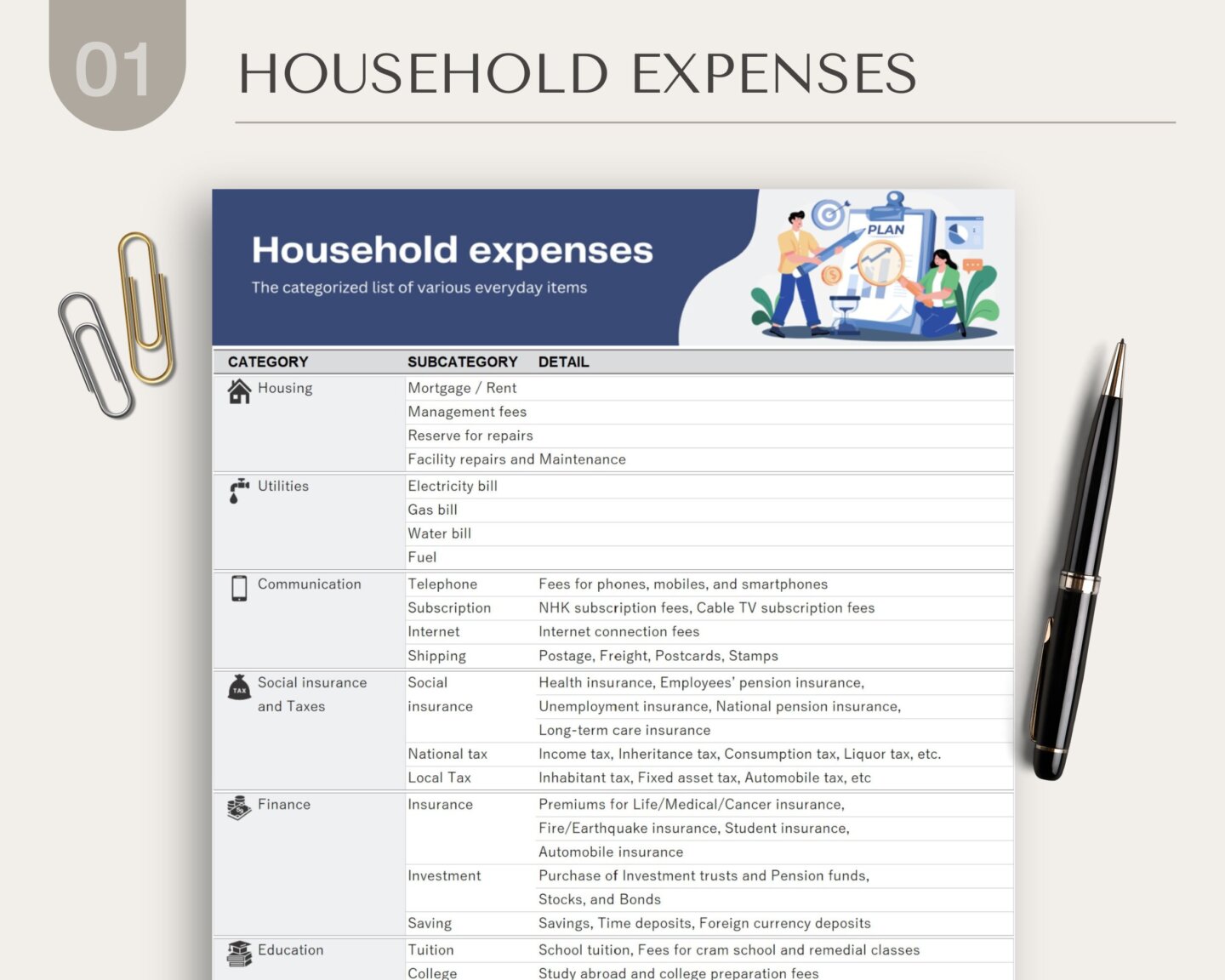
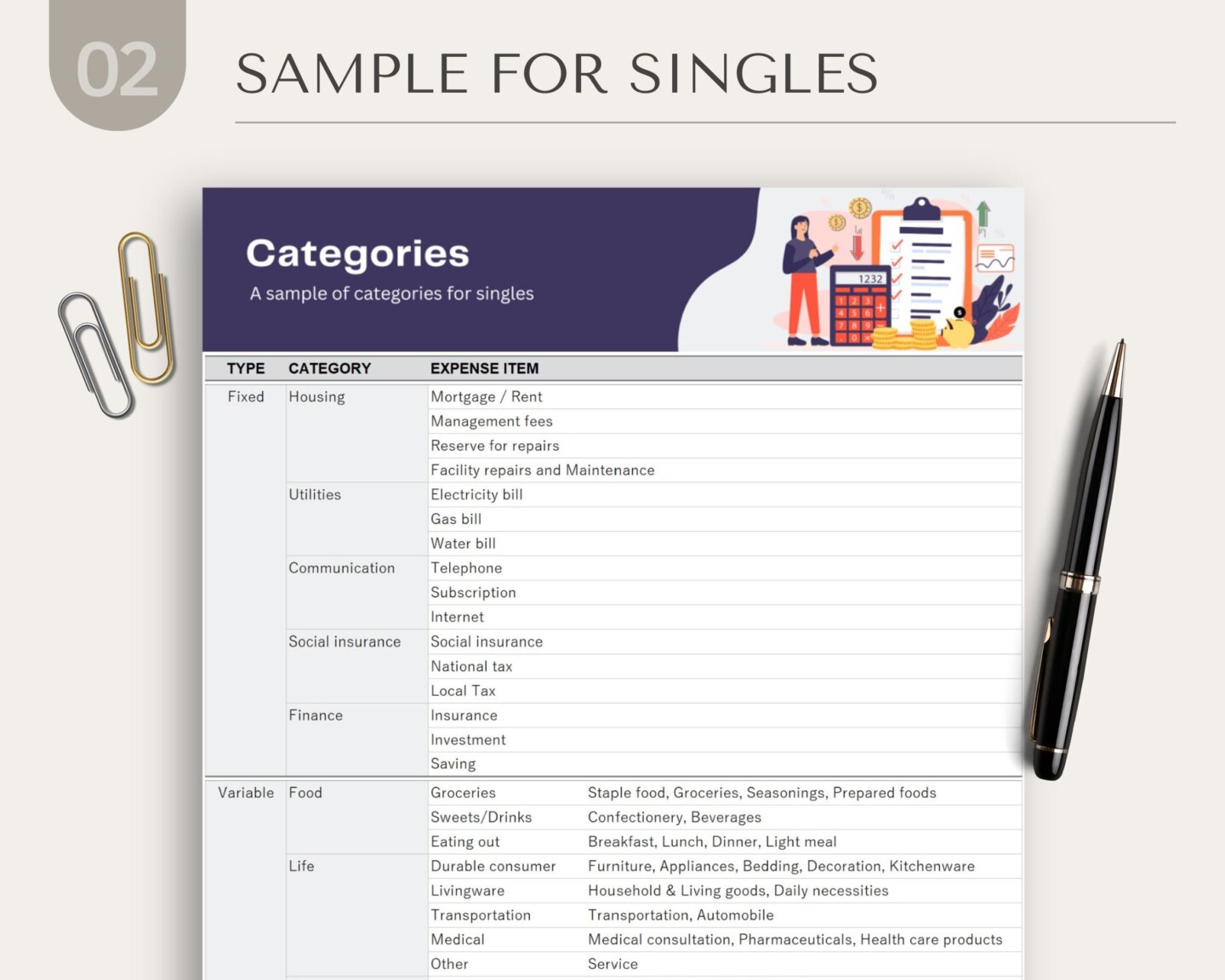
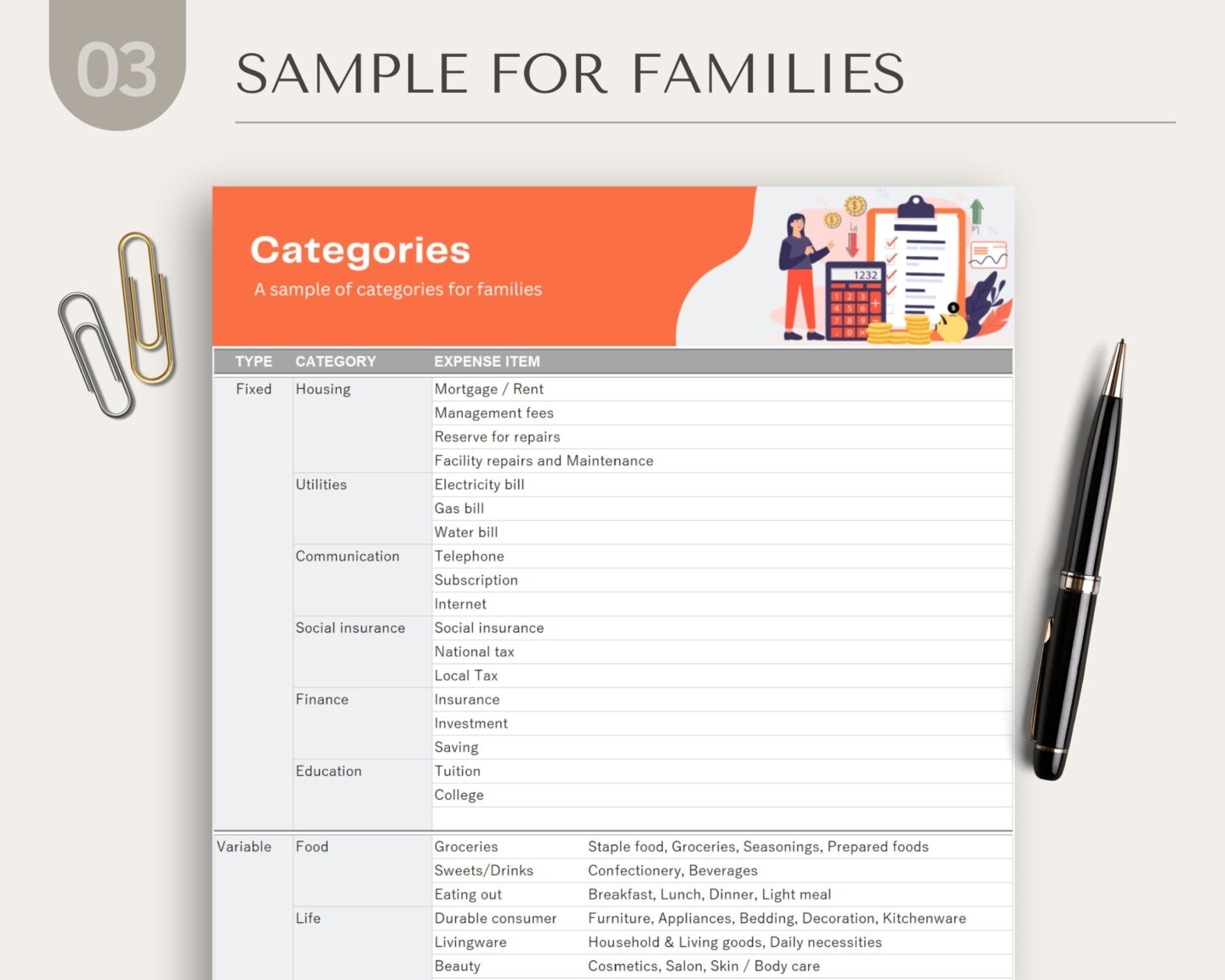
If you purchase the Excel household budget tool I created, you’ll receive the categorization list Excel file as a free bonus! With this tool, you can smoothly handle everything from budget entry to aggregation and analysis.
Take this opportunity to get the Excel household budget tool and categorization list Excel file to level up your budget management! Categorizing expenses is the first step toward effective household budgeting. Let’s take control of your finances with a categorization system that suits you and work toward a richer life!
